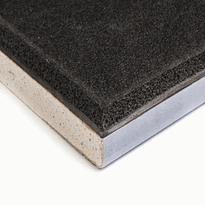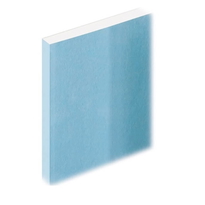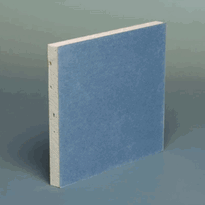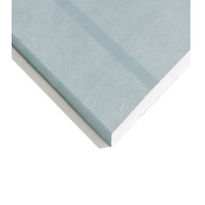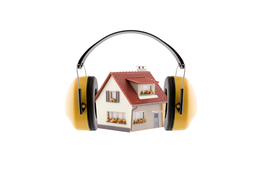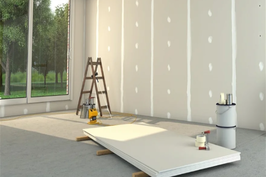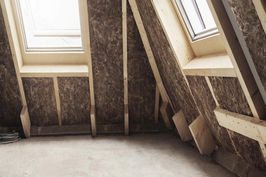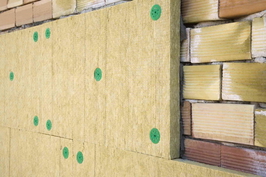Acoustic Plasterboard Thickness
Acoustic plasterboard typically comes in thicknesses of 12.5mm and 15mm. Thicker panels generally provide better sound insulation due to increased mass and density, which enhance vibration damping and noise reduction. The specific choice depends on the intended application, desired acoustic performance, fire safety requirements, and the capacity of the supporting structure.
Using thicker boards offers superior soundproofing and improved fire resistance. However, they also require stronger framing systems and can be more challenging to handle and install.
Further consideration should be given to how installation methods and the overall system design influence the acoustic effectiveness of the plasterboard. Proper installation techniques and careful planning can optimise soundproofing performance, regardless of the thickness chosen.
Understanding Standard Thickness Options for Acoustic Plasterboard
What're the common thickness options available for acoustic plasterboard, and how do these variations impact their acoustic performance.
Acoustic plasterboards are typically available in thicknesses of 12.5mm and 15mm. Thicker boards generally offer enhanced sound insulation properties. The increased density and mass of the core in these boards improve their ability to dampen sound vibrations, making them ideal for spaces where noise reduction is a priority.
A 15mm thick acoustic plasterboard can provide a higher level of noise suppression compared to the standard 12.5mm option. This makes it particularly suitable for environments that require both superior soundproofing and fire resistance, as the additional material offers extra protection.
While both thicknesses are designed to outperform standard plasterboards, the choice of thickness will depend on specific acoustic and safety requirements. Larger, heavier, and more dense boards are suited to applications where effective soundproofing is essential, helping to create a quieter and more comfortable environment.
Factors Influencing Thickness Selection in Building Applications
The choice of thickness for acoustic plasterboard in building projects is primarily shaped by a combination of material characteristics, functional needs, and compliance with regulatory standards. Material properties such as density play a key role in determining sound absorption and thermal insulation performance. Density affects how effectively the material can attenuate sound waves, making it a critical consideration. Practical considerations, including cost, availability, durability, and sustainability, also influence decision-making, helping to identify the most suitable option for a specific application. Fire resistance is a critical factor, with UK building regulations setting minimum standards to ensure safety. The required thickness often correlates with levels of fire protection needed, especially in areas subject to higher fire safety standards. Noise reduction performance, measured by Sound Transmission Class (STC) ratings, varies depending on whether the focus is on blocking airborne or impact sounds. Consequently, selecting an appropriate thickness depends on the specific acoustic requirements of the space—be it residential, commercial, or specialised environments. Environmental considerations are increasingly important, with emphasis placed on the recyclability of materials and energy efficiency. Thicker boards may offer improved insulation but could impact other aspects such as weight and ease of installation, which must also be considered for sustainable construction practices. Finally, proper installation practices, system design, and adherence to local building regulations are crucial to achieving the desired acoustic performance and safety standards.
Comparing Acoustic and Structural Performance of Different Thicknesses
Thicker acoustic plasterboards generally offer enhanced soundproofing capabilities due to their increased mass, which helps to absorb and block noise more effectively.
However, overall performance is contingent upon system design, quality of installation, and the specific properties of the materials used.
For instance, thicker boards, such as 15mm compared to 12.5mm, tend to achieve better sound insulation performance, often indicated by higher sound reduction indices.
Nevertheless, these thicker boards are heavier and may require additional structural support, which can influence the overall stability of the building.
The compatibility of plasterboard with other building materials and the particular application also play significant roles in determining acoustic performance.
In summary:
Increasing the thickness of plasterboards adds mass and can improve noise reduction.
Higher density materials contribute to better soundproofing but add weight.
Ensuring proper system configuration and meticulous installation is vital to optimise acoustic results.
Impact of Thickness on Fire Resistance and Soundproofing Capabilities
Increasing the thickness of plasterboard markedly enhances its fire resistance, primarily because the additional material provides greater mass and density. This slows the transfer of heat and delays the spread of fire, offering more effective protection.
When two layers of 12.5 mm plasterboard are combined, they can afford up to 60 minutes of fire resistance—meeting or exceeding many regulatory standards that often require at least 30 minutes for various structural elements.
Moreover, fire-resistant plasterboards made with gypsum contain water in their composition, which is released during a fire. This process helps to reduce temperatures and inhibit the growth of the flames, further improving safety.
In terms of soundproofing, increased thickness and density enhance the absorption of sound energy, leading to improved insulation.
When used in conjunction with other soundproofing materials and properly installed, thicker plasterboards contribute to creating stronger, safer, and more acoustically private environments within buildings.
Practical Guidelines for Choosing the Right Acoustic Plasterboard Thickness
Selecting the correct thickness of acoustic plasterboard is vital to achieving optimal soundproofing performance while ensuring structural compatibility. Several practical factors should be considered to make an informed choice tailored to your specific needs.
Application Type
Different applications—such as partitions, ceilings, or wall linings—have varying requirements for strength and acoustic properties. For instance, partitions may benefit from thicker boards to maximise sound insulation, whereas ceilings might require a different specification based on load-bearing considerations.
Aesthetic and Design Needs
The desired visual outcome and architectural intent can influence the choice of thickness. Thicker boards often provide better sound absorption but may affect the visual profile or finishing options. It's essential to select a thickness that aligns with both acoustic goals and design considerations.
Structural Support and Handling
The weight of acoustic plasterboards increases with thickness, which can impact the supporting elements. Thicker options, such as 15mm or 16mm, deliver superior soundproofing but require stronger framing and careful handling during installation.
Conversely, thinner boards, like 12.5mm, are easier to install and handle, making them suitable for situations where weight constraints are a concern.
Balancing Soundproofing and Structural Practicalities
The ideal thickness depends on balancing acoustic performance with structural feasibility. Opting for a slightly thicker board may be beneficial in noisy environments, while a standard 12.5mm board could suffice where moderate soundproofing is needed without compromising ease of installation.
Conclusion
Selecting the appropriate thickness of acoustic plasterboard involves careful consideration of factors such as desired soundproofing, fire resistance, and structural requirements. Thicker boards tend to enhance sound attenuation and fire protection, but they can also lead to higher costs and more complex installation processes.
It is essential to evaluate the specific building specifications and performance needs to determine the most suitable thickness. Adhering closely to manufacturer guidelines and industry standards will ensure the application is effective, safe, and optimises acoustic performance.
Making an informed choice of plasterboard thickness is vital for achieving both functional and regulatory objectives in UK building projects. Proper selection not only improves soundproofing but also contributes to overall safety and compliance with building regulations.
